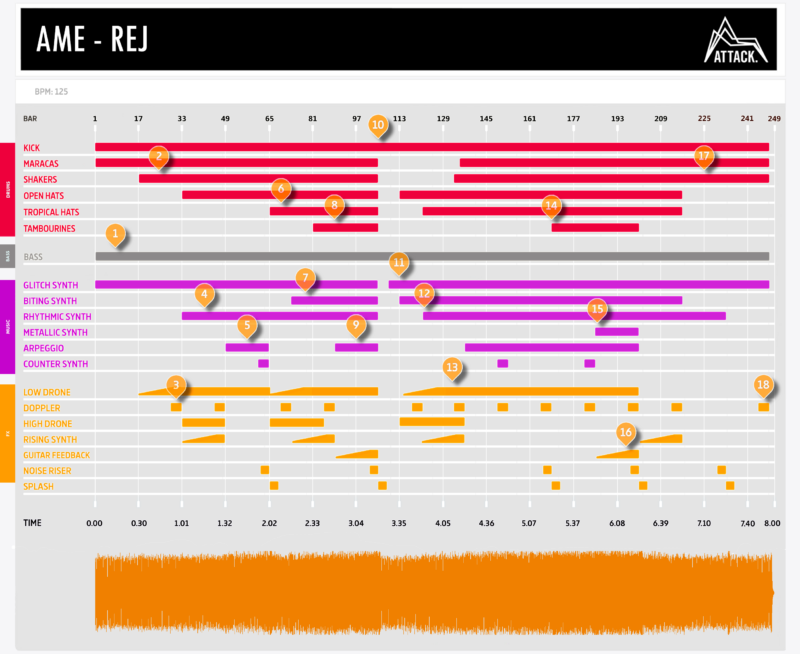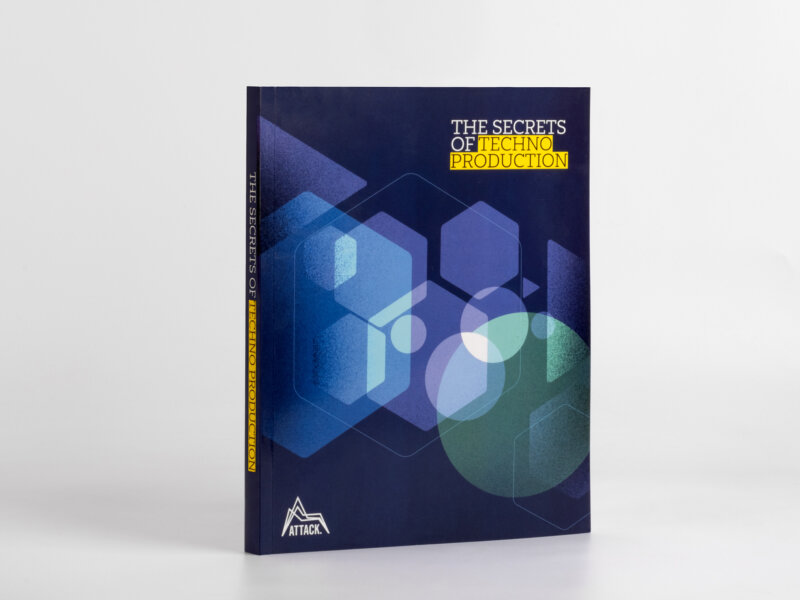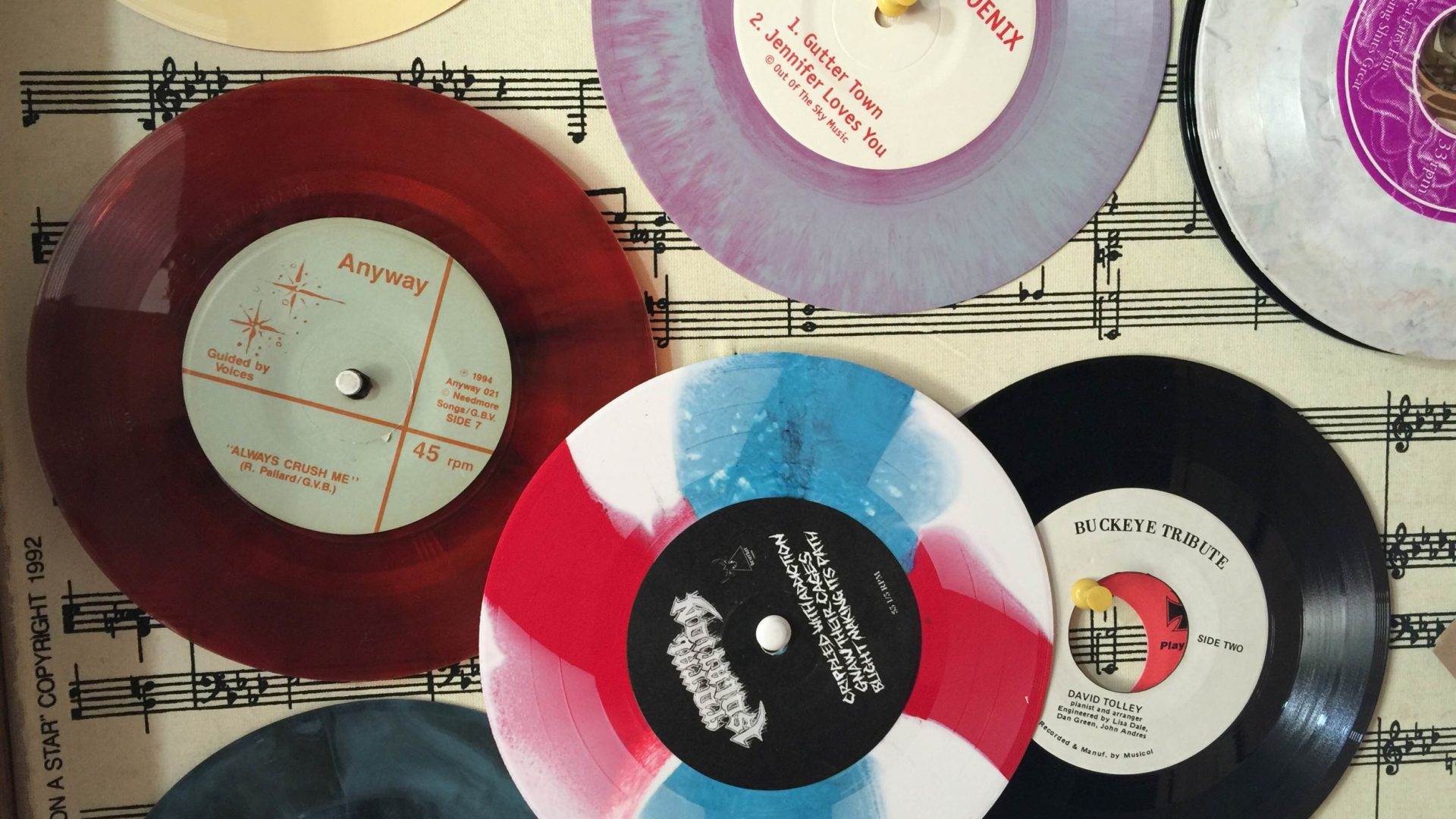An excerpt from our new book, The Secrets of Techno Production – few tracks have shaken the dance floor like Âme’s Rej, a genre-crossing anthem that became a staple in nearly every DJ’s crate. We break down its unique arrangement.
In 2005, amid a sea of minimal techno tracks, Âme dropped Rej. The German duo of Kristian Beyer and Frank Wiedemann combined elements of the then-rising laptop music scene with a widescreen mix and clever use of melody, creating a track that captivated both punters and DJs. Popular across genres, it became the sound of not only 2005 but also 2006, sending seismic ripples through dance music production that are still being felt today.
Key to the song’s power is an arrangement that prioritizes melody and harmonic content over heavy percussion. While rhythmically propulsive, the track relies on musical elements rather than drum programming techniques to drive its energy. This then-novel focus on melody helped inspire a new genre— melodic techno — while its mix, reportedly done by a rock mixing engineer, reset expectations for the kind of listening experience techno could provide.
What’s Happening

1
The first thing you’ll notice about Rej is the tempo. At 125 bpm, it’s closer to house. By allowing it to unfold at this unhurried pace, the track gives its harmonic elements more room to shine. It also allowed it to be played in sets across genres – quite a hat trick.
It begins with percussion and bass doubled up. There’s a kick, an unusual one, with both gating and a bit of bit reduction adding grit. Although Rej debuted at a time when laptop productions were becoming more common, it was made with hardware, meaning the kick is likely sampled. The bouncy bassline intertwines with the kick, creating an almost unified sound. These two elements continue throughout the entire track – the heartbeat at its centre.
Supporting the kick and bass is an electronic, maraca-like sound, panned to the right. Thanks to this deliberate panning, it’s immediately clear this is more than just another tracky banger.
The last sound introduced is a single-note synth, playing a percussive pattern with an off-time roll at the end of each 16-bar loop. It nods to glitch and laptop music, adding rhythmic spice.
2
Âme introduce two new sounds. The first is another shaker, more acoustic in nature, panned to the left to counter the maracas. The second is a low drone. This rises and falls throughout the track, gradually building in power before blossoming into a melodic progression. But that moment doesn’t arrive until later – here, it adds tension and atmosphere.
3
A Doppler-like synth rises at the end of the previous 16-bar loop, acting as a transition. Rej avoids fills or percussion dropouts, instead using synths and melodic elements to create tension and release while the percussion ticks along hypnotically.
4
Beyer and Wiedermann continue to add percussion, using this opening section as an introduction. The next sound to arrive is an open hi-hat, playing the typical off-beat techno pattern. What is not typical is the sound selection. Throughout, the two avoid the usual 909 techno drums, opting instead for more unique – and decidedly electronic – percussion. Notice how the open hats are also panned to the right. So far, the only percussion sound in the centre channel is the kick. There’s also no closed hi-hat pattern. Very unusual.
Instead of hi-hats, Âme give us a few different rhythmic synth pulses to keep time. The first of these is introduced here.
Finally, there’s an atonal high-pitched drone adding tension. This is actually feedback, likely created by routing one of the mixer channels out and back into the mixer itself, causing a feedback loop. It holds steady, creating a sense of unease, but stops abruptly after 16 bars.
The end of this loop sees the Doppler synth return, doubled up with another synth, this one rising in volume to take us into the change.
5
Now at bar 49, we’re introduced to the song’s famous arpeggiated synth line, looping off-time from the main pattern to inject a kind of seasick feeling. It’s doubled with a counterpoint synth doing a run down the scale at the end of the loop. Notice how the synth drone has receded from the mix, filtered down to give the arpeggio space in the mix.
A white noise riser whooshes up at the end of the bar followed quickly by a big splash at the beginning of the next section. These two will occur in tandem, the riser followed by the splash.
6
At bar 65, we finally get a percussion element closer to the centre of the soundstage. A closed hi-hat, it plays a simple pattern that recalls dance hall or other Caribbean rhythms. As the synth drone rises back up, the feedback loop reappears, filling the space abandoned by the arpeggio.
7
Partway through the current 16-bar loop at position 73, another percussive synth joins the party. This one has a sharp transient, adding a biting element that is both percussive and musical. It’s preceded by the Doppler synth. It’s an unusual choice to have this transition in the middle of a 16-bar section rather than at the end, but this is one of the benefits of working with hardware rather than copying loops out on a DAW’s grid. It can add a bit of unexpected life to a track and keep things interesting and organic
8
Things stay loose. At bar 81, a tambourine begins playing, mixed largely in the centre. All of the song’s percussive elements are now firing and the soundstage is full.
At bar 82, the feedback fades out, replaced by the rising transition synth, which fades in over eight bars, and the Doppler synth.
9
The arpeggio returns, while the synth drone, which has been slowly rising, keeps doing its thing. As it begins to rise higher, the cutoff opening, yet another transition synth slides in, this one in a higher register than the others. It sounds almost like guitar feedback. Finally, the white noise riser appears, signalling the change with a splash.
10
The breakdown. The song is reduced to kick and bass, the primal elements, and then after a bar, the pulse synth comes back in.
11
After only eight bars, Âme begin reintroducing sounds. The open hats, the biting synth pattern, the dirty feedback, the synth drone. The Doppler synth changes things after only eight bars. Energy is coming back.
12
Now at position 121, we get more. The closed hi-hats, the rhythmic synth. The dirty delay continues, casting a sense of unease over the song. This continues for a full 16 bars until the transition synth and Doppler bring us back to the meat of the song.
13
It’s not really a drop, though. The song is too hypnotic for that. But the arpeggio does indeed return here, giving us something melodic to hold onto. This is bolstered by the acoustic shakers, and the electronic maracas, which arrive one bar tardy. Maybe they were doing bumps in the toilets?
The big change here is the synth drone, which has now started playing a climbing series of notes. This introduces a new harmonic element to the song and comes as a surprise, as we’ve largely forgotten about the drone. With this, the song’s unusual musical key is fully revealed. Programmed in the extremely rare D♭ minor, it has seven flats and even a double flat. With so many flat notes, it’s no surprise that the key evokes a sad, deep emotion.
The filter on the drone synth opens over the following 16 bars, with the Doppler synth helping move the energy forward. The white noise riser and splash also lend a hand.
14
At bar 169, the tambourines shake back in, with all percussive elements now in the mix. We’re clearly moving towards the peak of the song. The rising synth drone supports this.
15
There’s one more element to introduce and this one comes at the song’s peak: a high-pitched, metallic synth. It’s subtly mixed, as it’s not meant to overwhelm the song, just add another layer. Halfway through the 16-bar section, the guitar feedback synth fades back in, adding a final level of tension. Thankfully, the Doppler synth and white noise arrive to take us home.
16
With a splash, the tambourines disappear, the metallic synth and arpeggio as well. The drone synth has ceased, its work for the song finished. The transition synth and Doppler herald us out.
17
Âme continue to remove percussive elements, leaving only the kick and two shakers. We’ve lost the biting synth as well. By removing elements like this, the listener knows that the song is winding down. It also gives the DJ space to start mixing in the next song without muddying up the mix. It can still be helpful to include transition sounds though, as Âme do with the white noise riser and splash. These are clues both for the DJ for where to start mixing the next song as well as for the punter dancing in the club.
18
For the final 16 bars, Âme bring the song back to much how it started, with one final Doppler synth to end things in a satisfying way.
If you like this article, you may enjoy our Top Tracks feature with Ame from last year. Read here.
Find out more about the new book The Secrets of Techno Production. Find out more.








